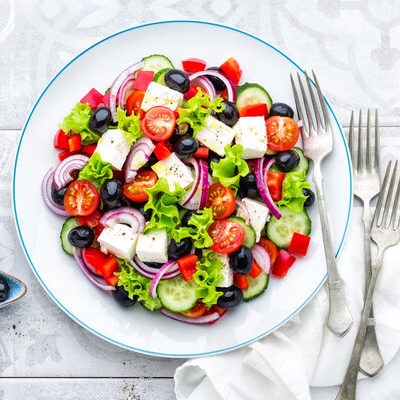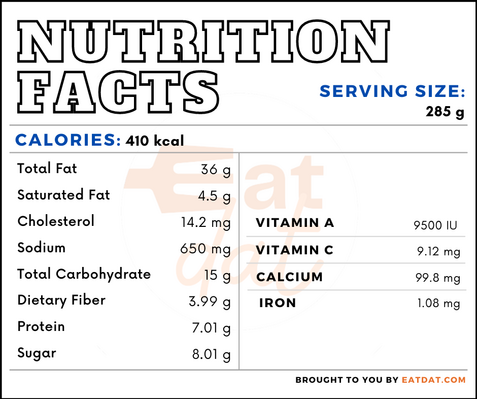
Greek Salad
What is Greek Salad?
A Greek salad is a salad that consists of tomatoes, cucumbers, onions, olives, and feta cheese, although it can contain seasonings and herbs, as well.
- This is also known as village salad, or horiatiki in Greek, and is often used as a side dish for bread.
- The olives used, if any, are generally of the kalamata variety.
It is considered a summer dish and is native to rural Greece with different regions having slightly different versions of this salad. Traditionally, the salad is eaten fresh and is set in a large bowl in the middle of the table from which everyone eats with their fork.
The traditional dish is the most famous, but other popular salads from Greece include:
- Horta
- Patatosalata
- Tonosalata
- Lahanosalata
- Pantzarosalata
- Askordoulakous
- Mermizeli
Origin of greek salad
This famous salad originated in Greece, where it is known as horiatiki. It is considered a rural farmer’s dish because of its ingredients, which were what a farmer would take to the field to eat. The exact origin of the salad is not known, but we do know that Greeks only started eating tomatoes regularly in the 19th century. Tomato seeds were first introduced into Greece in 1818. The salad was most likely invented after this period.
Nutrition
This dish is nutrient-rich and made up of simple and fresh ingredients. Tomatoes contain lycopene, which helps in reducing cardiovascular diseases, osteoporosis, and mental disorders through its anti-oxidative effects. It is also rich in vitamins A, C, E, and K, as well as several B vitamins, magnesium, potassium, copper, and manganese. Olives contain around 80% fat in the form of oleic acid, which keeps cholesterol and blood pressure in check.
Not to mention, olives are also rich in phytonutrients, vitamin E, selenium, and zinc. Furthermore, cucumbers contain vitamins A, C, and K, as well as folate and choline. Finally, feta cheese contains riboflavin, calcium, sodium, phosphorus, selenium, zinc, vitamins A, B6, B12 and K, iron magnesium, as well as pantothenic acid. Together, these ingredients combine to provide this salad packed full of nutrients.

Commercial production
Restaurants often prepare different variations of this dish and sometimes try to be different in their presentation. The main ingredients remain tomatoes, cucumbers, onions, olives, and feta cheese, but different restaurants may vary their proportions, seasonings, and presentation. This salad may be served in jars, as aperitifs, stuffed, as salad boats, or even sandwiches.
Greek salad recipes
Though the basic ingredients of this salad remain the same, it may be prepared and eaten in different ways. Here are a few recipes.
- Original Horiatiki
- Greek Chicken Salad
- Greek Sandwich
- Greek Sushi
- Greek Salmon Salad Bowl
- Greek Chickpea Salad
FDA regulations
The FDA regulates the production of olives and includes it under the pickles and relishes category. According to the Code of Federal Regulations, olives are the fruit of any variety of olea europaea, irrespective of their origin or their processing status. Tomatoes, cucumbers, and onions fall under the most frequently consumed raw vegetables, while feta cheese is regulated under cheese and cheese-related products.
References
Greek Salad, Taste Atlas, https://www.tasteatlas.com/greek-salad/recipe
“A Greek Salad for the Gods.” Belgianfoodie.com, Belgian Foodie, 19 Apr. 2020, belgianfoodie.com/a-greek-salad-for-the-gods/.
Romagnolo, Donato F, and Ornella I Selmin. “Mediterranean Diet and Prevention of Chronic Diseases.” Nutrition today vol. 52,5 (2017): 208-222. doi:10.1097/NT.0000000000000228, https://www.ncbi.nlm.nih.gov/pmc/articles/PMC5625964/
